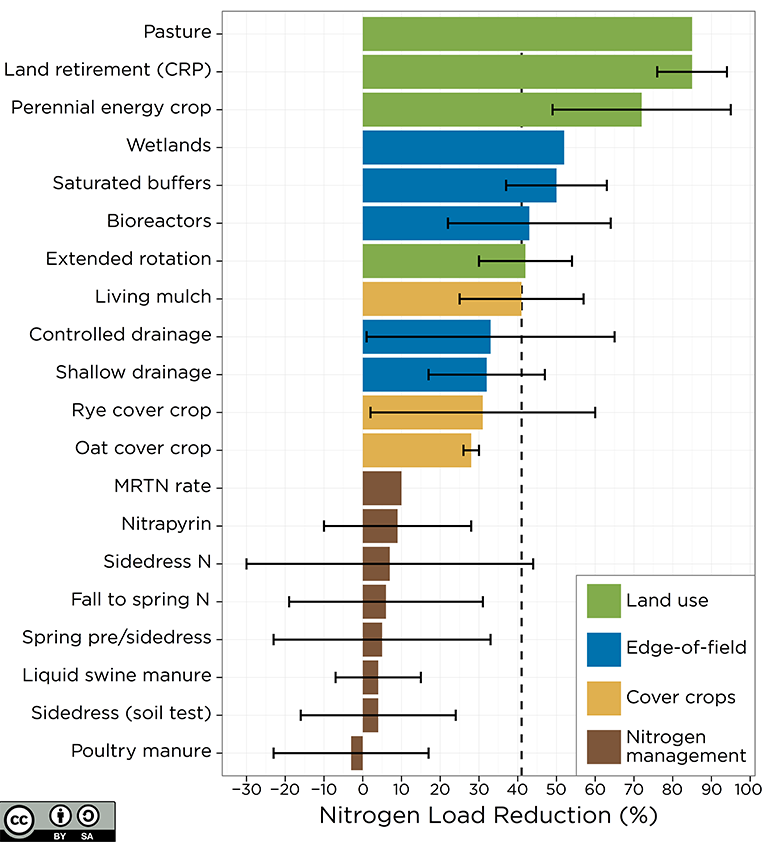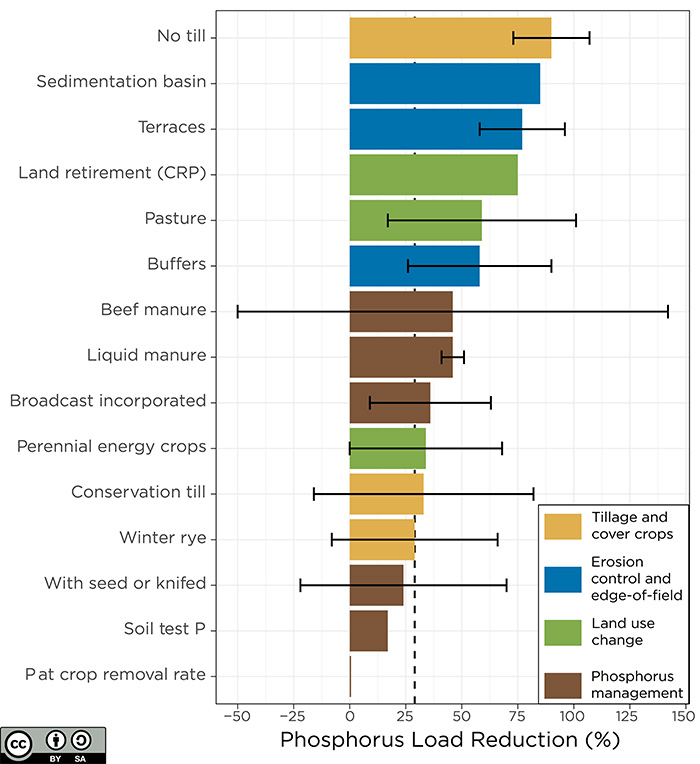Nitrogen Load Reduction
Average nitrate-nitrogen concentration or load reduction as a percentage. Horizontal bars represent one standard deviation above and below the mean. Dashed line represents the 41% nitrogen reduction goal from nonpoint sources.



